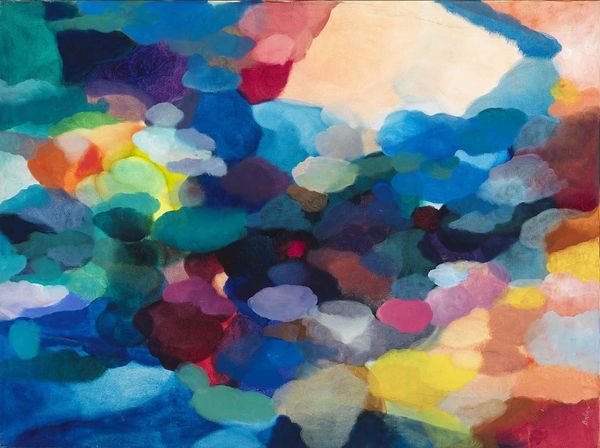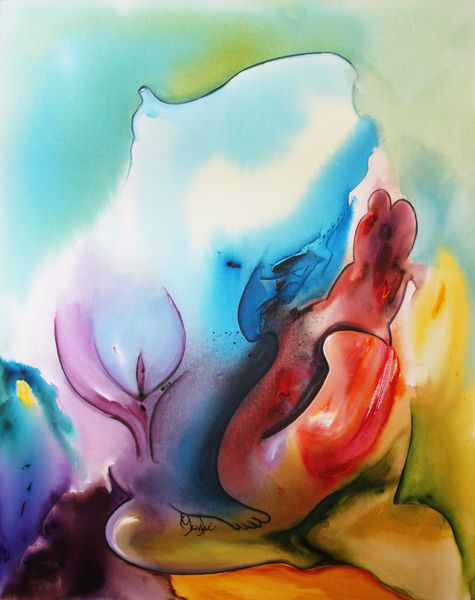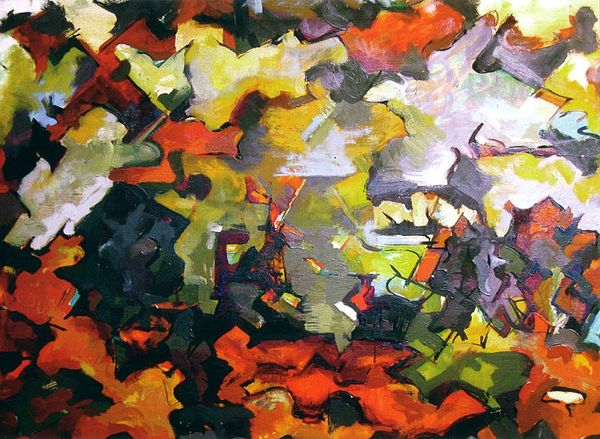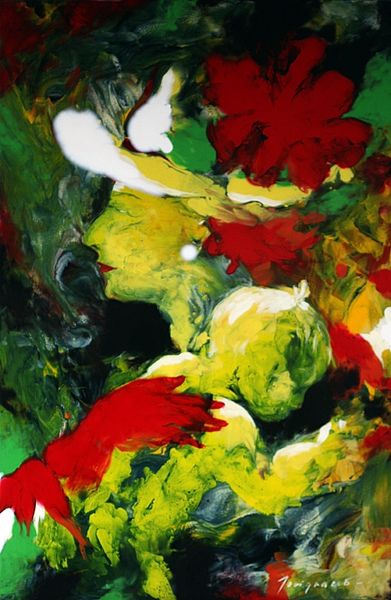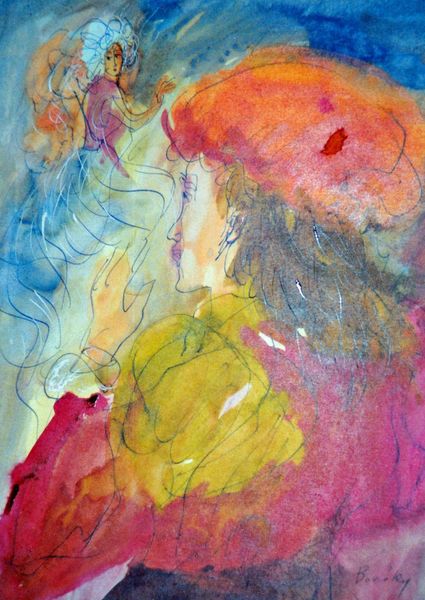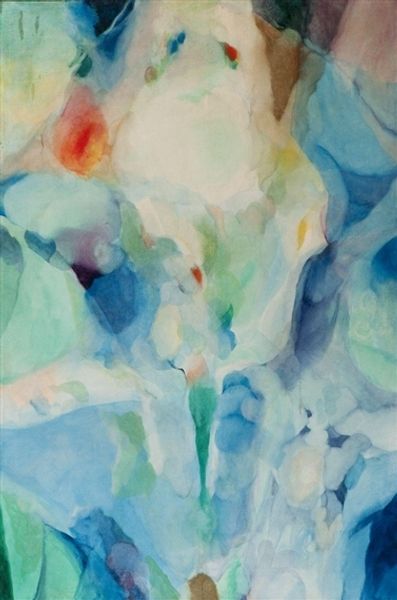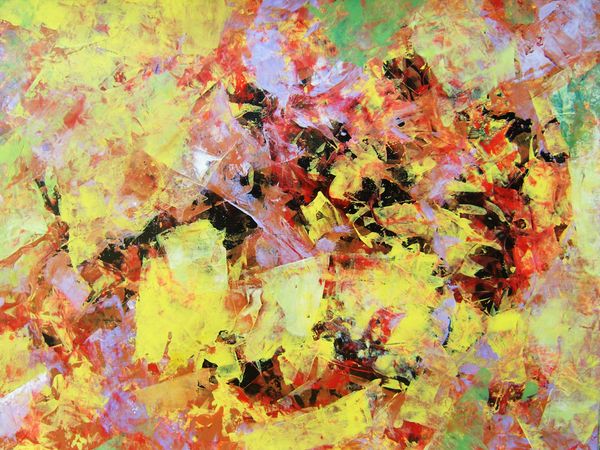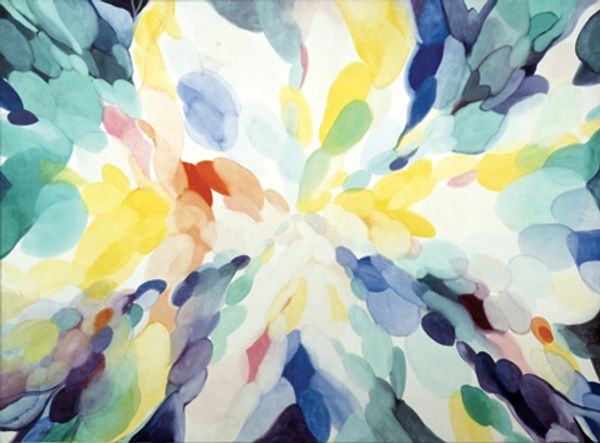
Dimensions: 50 x 70 cm
Copyright: Requena Nozal,Fair Use
Art Historian: Here we have Requena Nozal’s “Celeste I,” created in 2006. The work seems to be aligned with movements like abstract expressionism and colour-field painting, genres that emerged prominently in the mid-20th century and continue to resonate today. Curator: My immediate response is a feeling of soaring lightness. The ethereal blues and whites dominate, contrasted by these powerful shapes of red, yellow and earth tones that interrupt the sky. Art Historian: Absolutely. These forms could reference land or perhaps geological shapes. But considering abstract expressionism’s legacy and rise within a Cold War context, the non-figurative nature also speaks volumes. It defied the politicized figurative styles that were favoured by totalitarian regimes. Curator: I agree. What strikes me, formalistically speaking, is how Nozal uses layers of translucent washes to build depth. It's a sophisticated dance between opacity and transparency, creating a visual push and pull across the canvas. Look at how the hard edges of some forms contrast against the soft, cloud-like blending elsewhere. Art Historian: It's also interesting to think of the cultural implications. The freedom celebrated by Abstract Expressionism—artistic individuality detached from state control—became a soft power tool. Galleries championed these artists, solidifying the United States as a haven for free expression. Do you think we still carry that baggage, viewing paintings like these? Curator: Perhaps inevitably so. However, I still marvel at the technique alone. The acrylic-paint application in "Celeste I," enables swift, expressive gestures. And in a more granular approach: Observe the nuanced spectrum shifts that establish its inner atmospheric luminosity. It’s far from random and it communicates both spontaneity and profound order. Art Historian: Very insightful. Abstract Expressionism does allow the audience space for free association. What did abstract art offer society then, and what could a painting like “Celeste I” give us today? Space for inner dialogue and hopefully more tolerance for interpretation. Curator: Exactly! Beyond art history or socio-political narrative, here is pure emotive interplay rendered with colour and dynamic form, for everyone to observe.
Comments
No comments
Be the first to comment and join the conversation on the ultimate creative platform.
